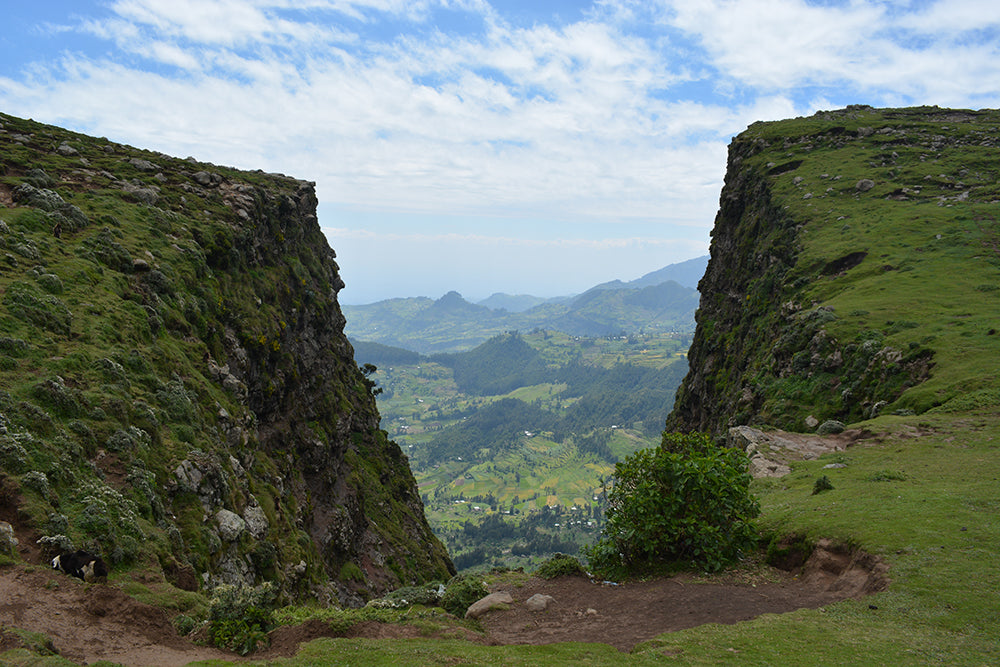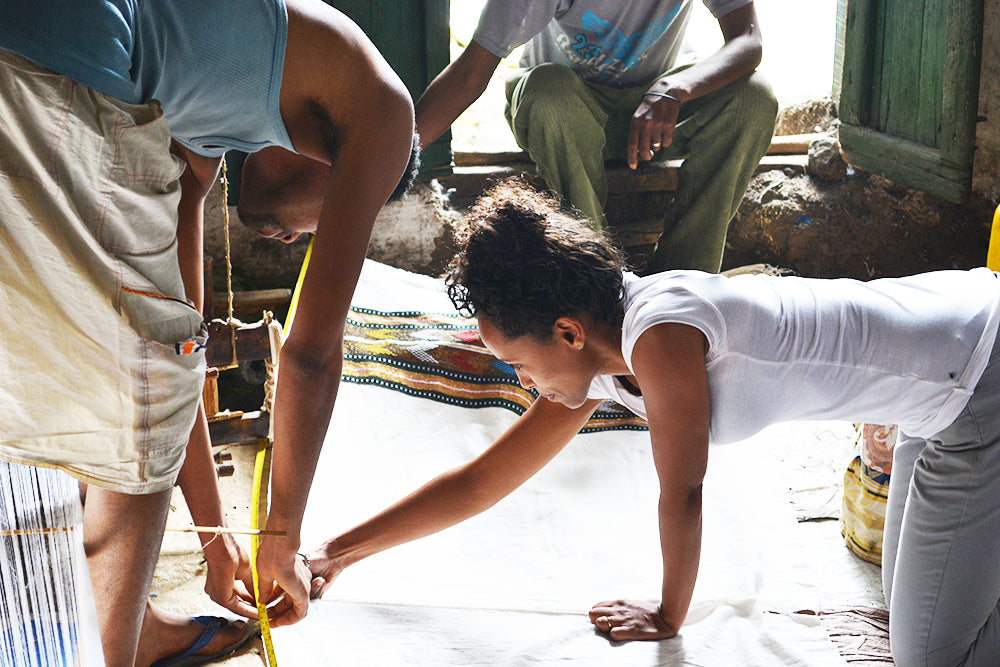
This past weekend I embarked on what I hope is the first of many textile journeys in Ethiopia. I was in search of the Wollo gabi, a traditional blanket which is the main inspiration for our next line called the Heritage Collection launching in November. A gabi is a blanket comprised of four panels that are stitched together on one side. The Wollo gabi has broad gold and silver ornamentation on the ends. It's trademark features are the gold and black stripes that are flanked by black and white dots. While the stripes and dots are woven, the pattern is decorated with rainbow colored arrows in the center that are embroidered on to the stripes. In Ethiopia, the gabi is often used as a shawl worn by men, mainly on special occasions. Many Ethiopians living in cities use them as blankets in their homes.

My journey started in Addis Ababa where the gabi are sold in textile markets. The shop owners in Shiromaeda, a textile hub in the city, let us know that the blankets are made in the prisons of Wollo, a region in eastern Ethiopia. The inmates are taught weaving as a form of rehabilitation so they have a skill that can sustain them in the future. We decided a good place to start would be in the capital city of Wollo which is Dessie (pronounced deh-say).

Dessie is around 400km east of Addis Ababa. While there is an option to fly, I love taking road trips in Ethiopia since the landscape is so majestic -- it’s one of my favorite things to do. We stayed in a town just outside of Dessie called Kombolcha. The drive from Kombolcha to Dessie was especially beautiful, filled with curving roads through expansive mountains.

When we arrived in Dessie our first stop was Piazza, which is the center of the city’s market, since we were told by some locals that the prison has a shop there. We found the small kiosk shop without a problem. The prison shop sold a wide assortment of gabi’s all with bold graphic patterns, but we didn’t see the particular design we were looking for. We described the pattern to the shop owner who pulled out a few samples. We were in luck. He told us the name of the pattern: ‘Sindid’. Sindid is a type of small bead. The name describes the small stitching of the colorful arrow pattern which look like beads and are a trademark of the Sindid. The shop owner let us know that they made very few of the Sindid patterns and it was mostly made by other local weavers. We asked if he knew where we could find them. He recommended that we ask the owners of the dress shops down the road.

At the edge of Piazza was a large shopping center. The dress shops were all located in the first level of a new section of the mall which was still under construction. There we saw a variety of Sindid Wollo gabi’s. I happily purchased a few from one of the shops. The owners were kind enough to tell me where I could find the local weavers that created the gabis for them. Many of them lived at the edge of the town, which is how we were led to the home of Enat.


Enat is a weaver, which is extremely rare since weaving is traditionally performed by men. Her home was at the top of a rocky hill. The earth was a clay color, common in many parts of Ethiopia. In the front of her home were two pit looms, spools of yarn and a bobbin winder. While she no longer weaves for production, she creates blankets for friends and family. To service the local shops she hires local artisans who work in her home. Enat was kind and easy going. She showed us the gabis that she had created for friends, but she didn’t have any of the Sindid pattern. I asked her if she would be willing to create some custom Sindid pattern Wollo textiles for us, and she was happy to oblige. From there her weavers and I worked out the details of our custom order.

When I first started this journey, I wasn’t sure what it would bring or if I would find the artisans that create the Wollo gabi. I am so excited to be partnering with Enat and her weavers for Bolé Road. I can’t wait to share the pieces from our special collaboration for our Heritage Collection. Stay tuned...
xo,
Hana

